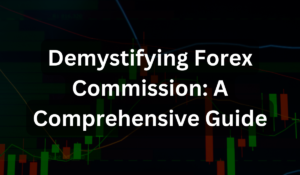Introduction
The forex market is a dynamic and complex financial market where currencies are traded. To understand the factors that influence currency exchange rates and make informed trading decisions, it is essential to have knowledge of economic theories. Economic theories in the forex market provide insights into the relationships between economic variables and currency movements. In this comprehensive guide, we will explore the four major economic theories in the forex market, delving into their principles, applications, and relevance to trading.
Balance of Payments Theory
The Balance of Payments Theory focuses on the relationship between a country’s balance of payments and its currency exchange rate. According to this theory, a country’s balance of payments, which represents the demand and supply of foreign exchange, influences its exchange rate. A negative balance of payments, indicating higher demand for foreign currency, can lead to a depreciation of the domestic currency. Conversely, a positive balance of payments, indicating higher supply of foreign currency, can result in an appreciation of the domestic currency.
It is important to note that the balance of payments is influenced by factors such as trade flows, capital flows, and government interventions. Understanding the balance of payments theory can help traders assess the potential impact of economic indicators and policy decisions on currency exchange rates.
Purchasing Power Parity (PPP) Theory
The Purchasing Power Parity Theory compares the purchasing power of different currencies to determine their equilibrium exchange rates. It is based on the concept that identical goods should have the same price in different countries when expressed in a common currency.
According to PPP, if the cost of a basket of goods is the same in two countries, the exchange rate between their currencies should adjust accordingly. This theory enables traders to assess whether a currency is overvalued or undervalued by comparing its exchange rate to the purchasing power of goods in different countries. However, it is important to consider factors such as transaction costs, trade barriers, and non-tradable goods when applying PPP theory in practice.
Law of One Price (LoOP) Theory
The Law of One Price (LoOP) Theory states that identical goods should have the same price in different markets after accounting for currency conversion. This theory assumes that there are no barriers to trade or transaction costs that would prevent prices from equalizing across markets.
While the LoOP theory provides a framework for assessing currency exchange rates, it is important to acknowledge that real-world conditions may deviate from this idealized concept. Factors such as transportation costs, tariffs, and market inefficiencies can create price disparities. Traders should consider these factors when evaluating exchange rate movements based on the LoOP theory.
Mint Parity Theory
The Mint Parity Theory, also known as the Gold Standard Theory, was relevant during the time when countries used gold as the basis for their currency values. This theory emphasizes the relationship between the gold content of a currency and its exchange rate.
Under the gold standard, the value of a currency was determined by the amount of gold it represented. Changes in the price of gold would impact the exchange rate of currencies tied to the gold standard. An increase in the price of gold would lead to an appreciation in currencies linked to gold, while a decrease in the price of gold would result in a depreciation of these currencies.
It is important to note that the gold standard is no longer used in modern economies. However, the Mint Parity Theory provides historical insights into the relationship between gold and currency values.
Commonly Asked Questions:
Q1: Can economic theories predict currency movements accurately?
A1: While economic theories provide valuable frameworks for understanding currency movements, they cannot predict future exchange rates with certainty. Currency markets are influenced by a multitude of factors, including economic indicators, geopolitical events, and investor sentiment.
Q2: Are these economic theories still relevant in today’s forex market?
A2: Economic theories form the foundation of understanding currency markets. While their direct applications may vary, the principles and concepts behind these theories remain relevant in analyzing and interpreting currency movements.
Q3: Do traders rely solely on economic theories for forex trading?
A3: Successful forex trading requires a comprehensive approach that combines economic analysis, technical analysis, and risk management strategies. While economic theories provide valuable insights, traders also consider other factors such as market trends, chart patterns, and news events in their decision-making process.
Conclusion:
Understanding economic theories is essential for navigating the forex market effectively. The four major economic theories—Balance of Payments, Purchasing Power Parity, Law of One Price, and Mint Parity—provide valuable insights into the factors influencing currency exchange rates. While these theories offer frameworks for analysis, it’s important to remember that forex trading involves multiple variables and risks. By combining economic analysis with other toolsand strategies, traders can enhance their decision-making process and adapt to the dynamic nature of the forex market.
Remember, economic theories are not foolproof predictors of future exchange rates, but they provide a foundation for understanding the complex interplay of factors that influence currency movements. Successful forex trading requires continuous learning, adaptability, and a holistic approach that integrates various analytical tools and market insights.
By staying informed about economic theories and their applications, traders can gain a deeper understanding of the forex market and make more informed trading decisions.








